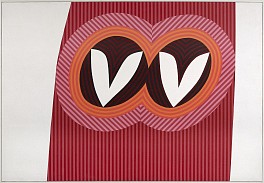VIDEO NOW AVAILABLE | Jill Nathanson: Light Phrase
December 23, 2020 - Berry Campbell


December 9, 2020 - Berry Campbell
Berry Campbell is pleased to announce the representation of the Estate of Frederick J. Brown (1945-2012)
Exhibition formcoming September 9 - October 9, 2021
Curated by Dr. Lowery Stokes Sims
View Works by Frederick J. Brown

December 3, 2020 - Paint Stories with Mark Golden Podcast

December 2, 2020 - Artsy
100 Standout Works from Miami Art Fairs
From Kehinde Wiley’s newest portrait to a playful sculpture by Austin Lee, browse a curated selection of 100 new-to-market works from your favorite artists, on view now during Miami Fair Week. For more from the Miami fairs, browse the online catalogues of Art Miami and CONTEXT Art Miami—hosted exclusively on Artsy—as well as Art Basel Miami Beach, PRIZM, and UNTITLED, ART.

November 17, 2020 - Berry Campbell

November 11, 2020 - Merle English for Newsday
THE TRANSPORT BUSINESS
Frank Wimberley’s military engagement began as a private assigned to the 3384th Quartermaster Truck Company. Said Wimberly, "I never did any fighting. I did a lot of transporting troops and shipping supplies to areas where there was fighting." Because Black men could only serve in segregated units of the military, many were assigned to labor and service units.
Wimberley was happy with his assignment, however. "I liked that job; I liked being in a foreign country," he said. "We were very much liked by the Germans because we were Black; they liked the fact that they were meeting a different kind of American."
He said he suffered some of the hostility directed at Blacks by some whites, "even in the U.S. military," Wimberley remarked.
"The Black soldiers in my unit were always segregated from the whites. White soldiers would show animosity to us."
"You’re always going to find some problem makers, especially in the service," he said, "but I enjoyed my stay over there."
Encounters between Blacks and Germans were mostly social, Wimberley said. "A lot of the guys had German girlfriends," he said. "Everybody was poor because of the war; they would fix dinners for us. They had to go on the farms and steal food."
He described how a shared love of music fostered camaraderie among the Black soldiers. "We would form little groups," said Wimberley, who played the trumpet. "There were others who played other instruments; we would get together and play; it was always jazz."
Learning that Wimberley had an interest in art, German soldiers who were artists themselves "made portraits of us," Wimberley said. "We gave them cigarettes; they’d rather have that than money. We didn’t like the Germans because of Hitler, but some of them became my very good friends," he said.
After 18 months in the service, Wimberley was discharged. "I was so glad to get back home," he said. "I wanted to come home and see my mother in the kitchen."
His latent bent toward art spurred Wimberley to pursue studies in painting, sculpture and pottery at Howard University. From a family of musicians and artists, "I’ve always been some kind of an artist, but I got better," said Wimberley, who is represented by the prestigious Berry Campbell Gallery in Manhattan. Christine Berry, a co-owner of the gallery with Martha Campbell, said his abstract paintings are highly sought-after around the nation.
Some of Wimberley’s works are included in "Color and Absence," a show at the Southampton Arts Center through Dec. 27. He is usually busy, dividing his time between his home in Sag Harbor, his studio in Corona, Queens, and Berry Campbell. Wimberley is married. He and his wife, Juanita, have a son, Walden, a musician.

October 29, 2020
Virtual Gallery Talk, Syd Solomon: Concealed and Revealed
November 9, 2020 1:00PM
This is a Virtual Program. ZOOM information will be included in your confirmation email.
Register

October 20, 2020
Spinning Figure, 1949
Oil on canvas
42 3/4 × 13 7/8 inches
Sheldon Museum of Art, University of Nebraska–Lincoln, Anna R. and Frank M. Hall Charitable Trust

October 17, 2020 - Phil Lederer for SRQ Magazine
"I just hope people see what's there," says Mike Solomon of the portraits comprising his latest exhibition, Scenes from the Pandemic, showing online this November through the Sarasota Art Museum. Drawn in colored pencil, the series captures, in part, the long terrible arc of that period in 2020, beginning as a tribute to black doctors and essential workers but ultimately spiraling into an emotional account of protesters and journalists under assault in a world caught on fire and an artist coming to terms with what he sees. Though isolated from his studio while caring for his mother during the pandemic, he couldn’t ignore the images on TV, the photographs arriving daily on the doorstep or his artist’s instinct gnawing at his inactivity.
“A dissatisfaction with being more remote than I wanted to be in terms of activism,” Solomon says. “I didn’t want to be outside of it looking in.” And in those photographs, he found himself struck by a particular aspect of the social unrest unfolding before him. “There are black doctors helping anyone who walks through the door,” he says. “Yet they take their scrubs off and walk outside and they might get shot. Can you imagine that?” So the renowned abstract artist picked up a colored pencil and tried something he hadn’t done in near 50 years: draw from a photograph. And as he did, he embarked on both an artistic and emotional journey.
Solomon admits to a certain “philosophical prejudice” against drawing from photo references, saying that he never quite understood why an artist would spend their time on such a pursuit when the photograph already exists. “Now I do,” he says. Not only did Solomon find the exercise an artistic challenge, more engaging and difficult than he had previously supposed, but he also found that, in forcing himself to absorb each image in minute detail and re-create it from his own hand, it awakened greater compassion for his subjects.
“I go down into this little world and the empathy emerges,” he says. “It’s a way of digesting it in an empathetic way you wouldn’t normally.” It’s an empathy that Solomon hopes his audience can partake in, if they just take a moment to stop and really see what has happened on their and his collective watch. And if the images in the papers didn’t get the point across, maybe seeing them in a different context will. “As soon as it becomes a ‘work of art,’ people stop a lot longer,” Solomon says. “That’s just the magic of art—it slows the moment down.” SRQ
Read More >>